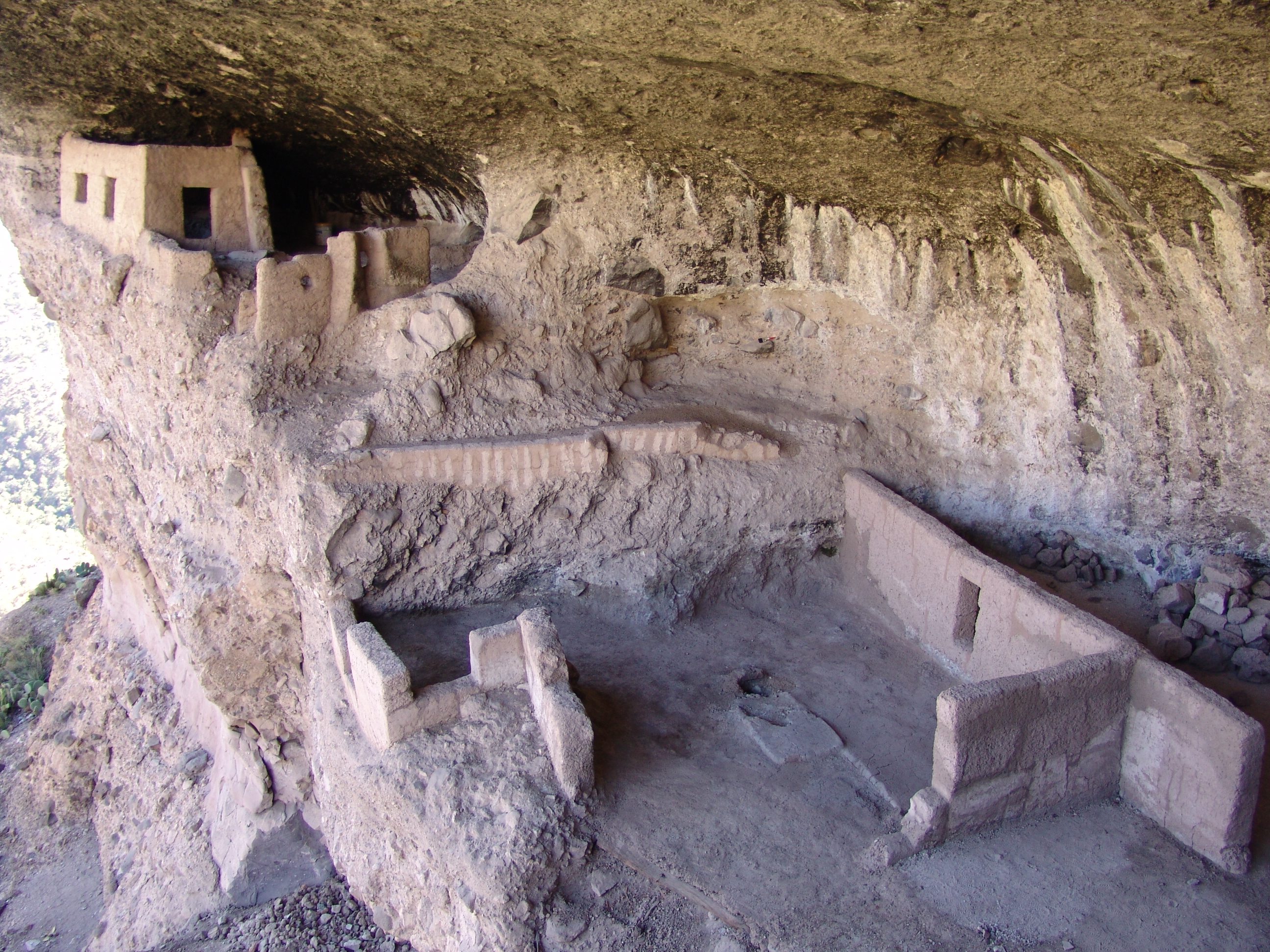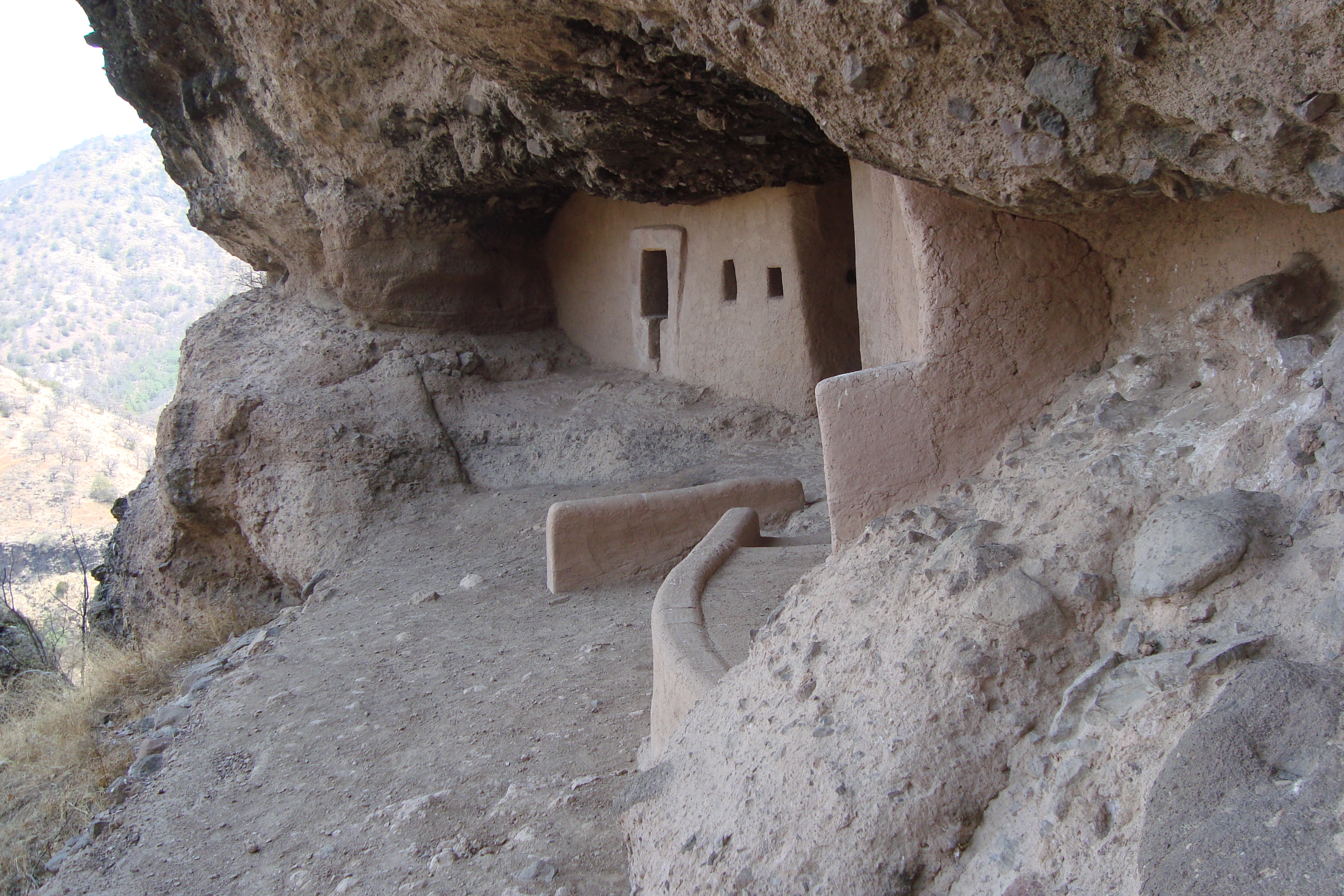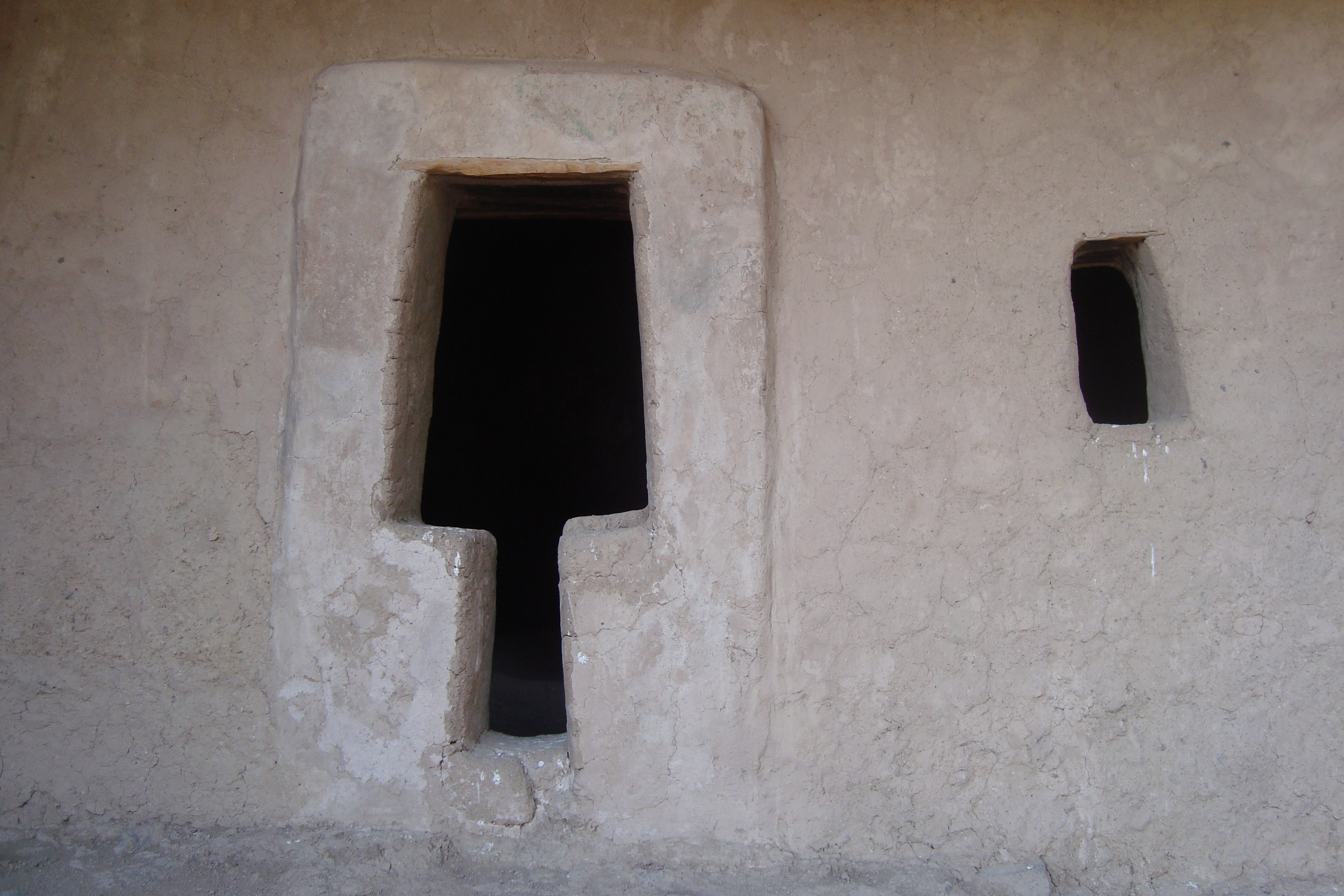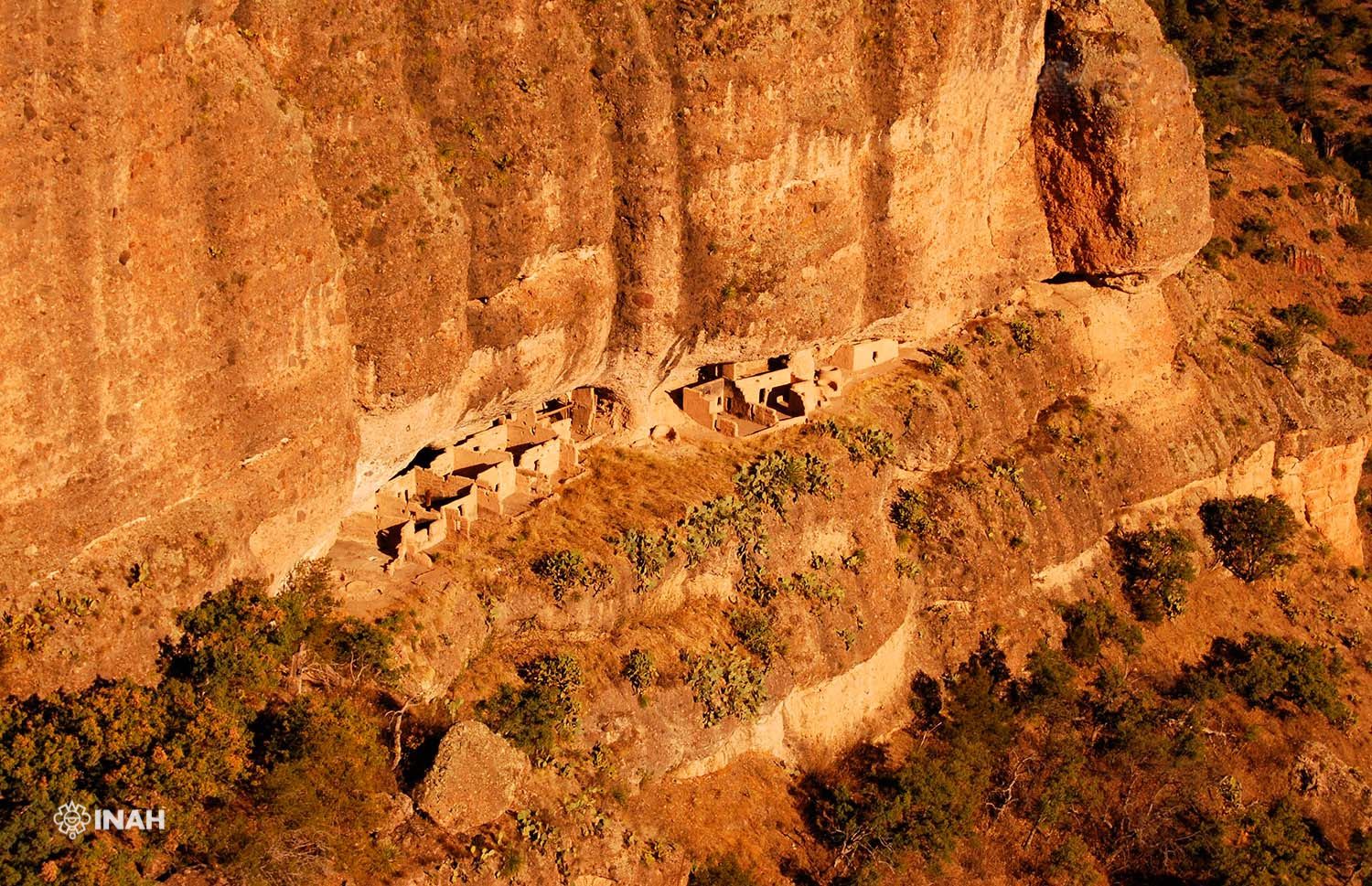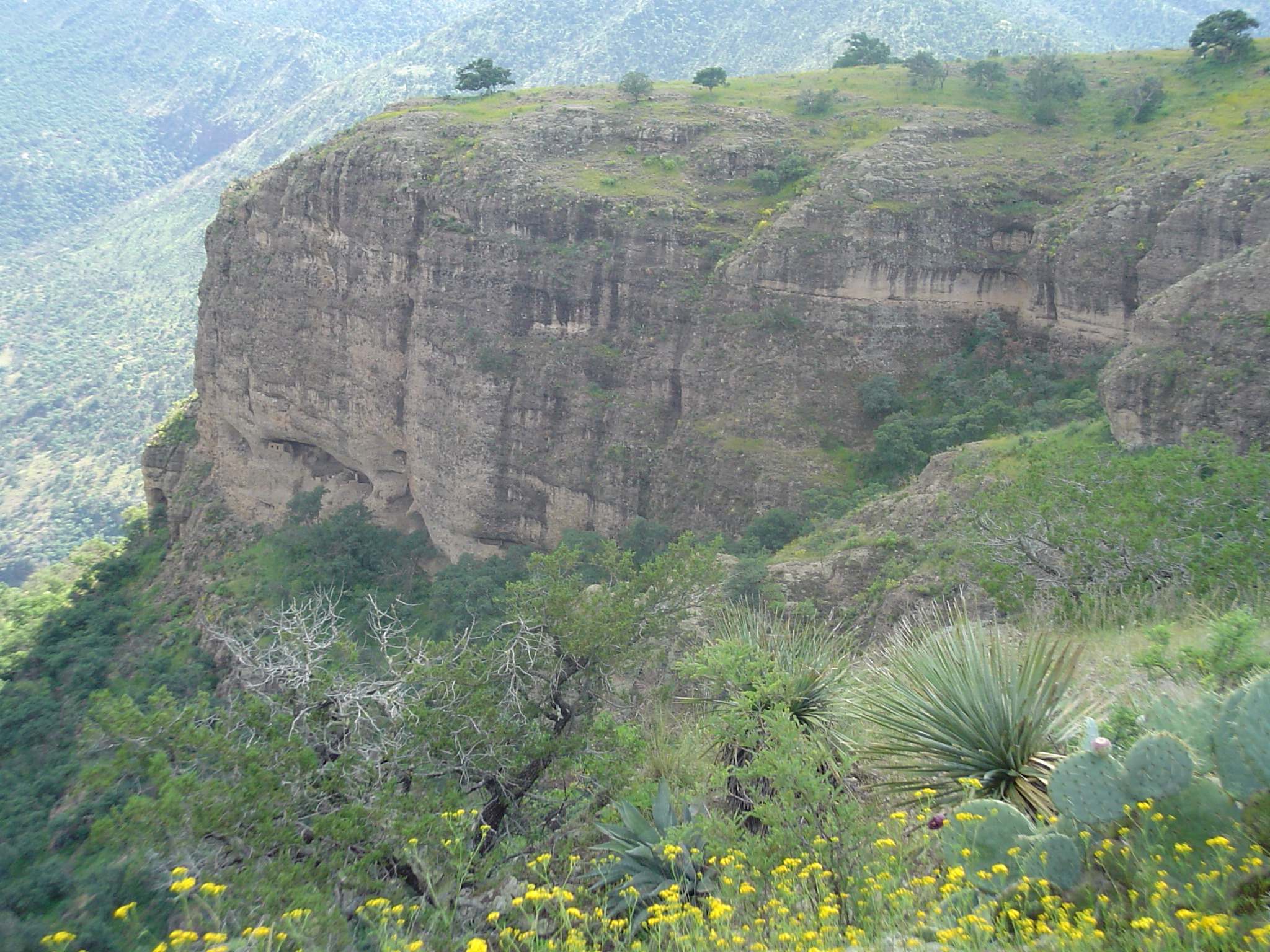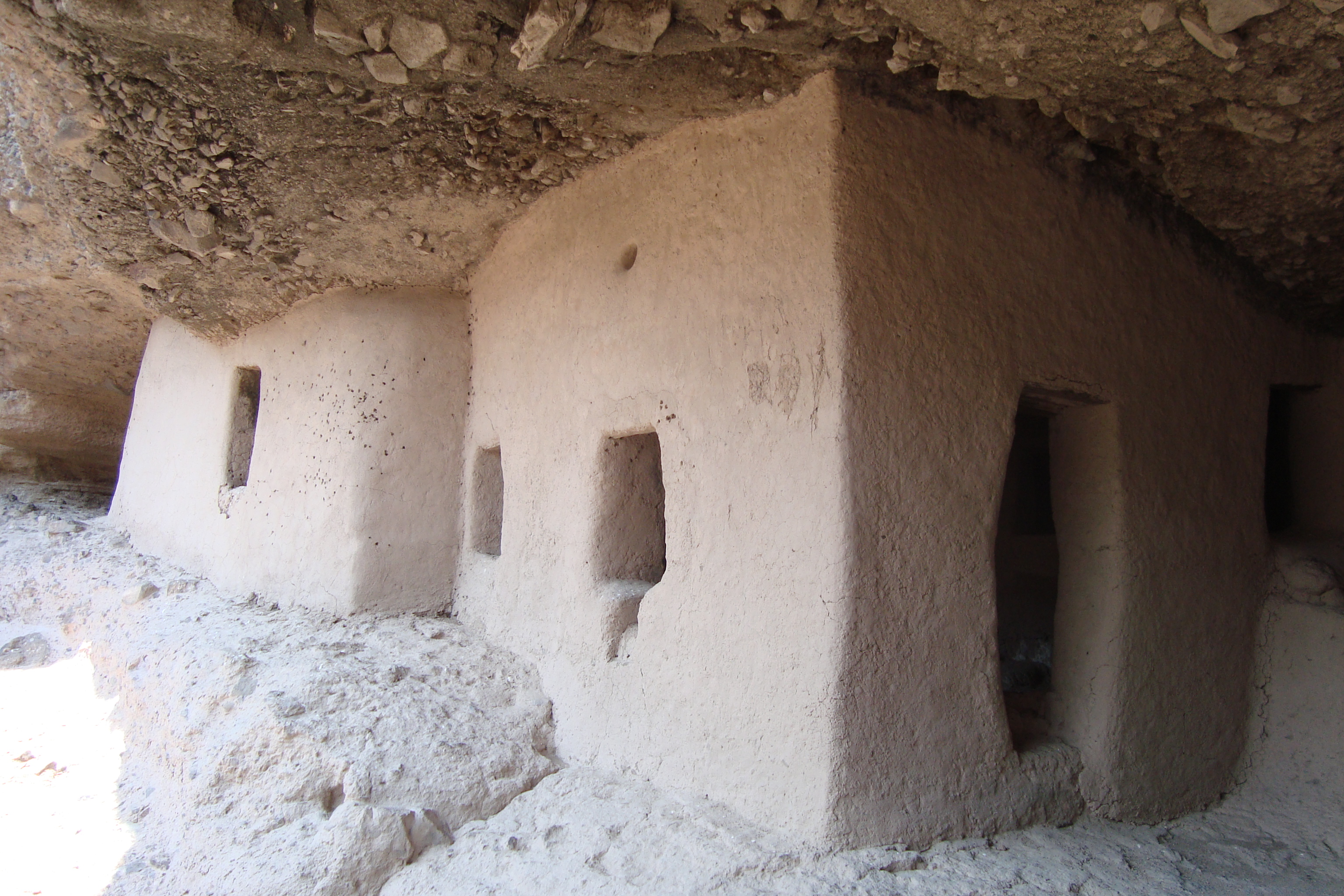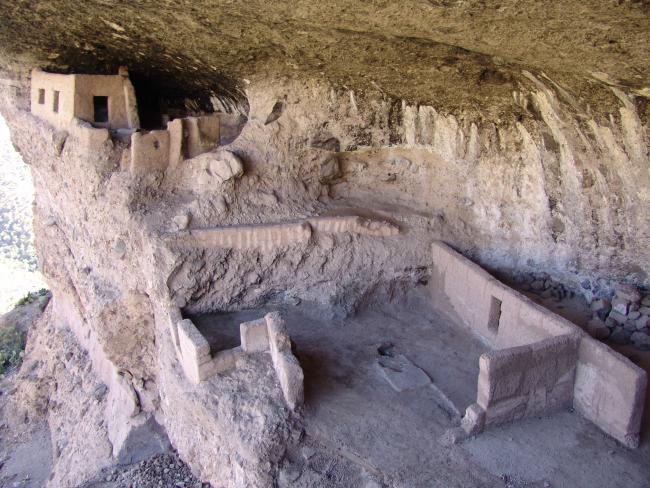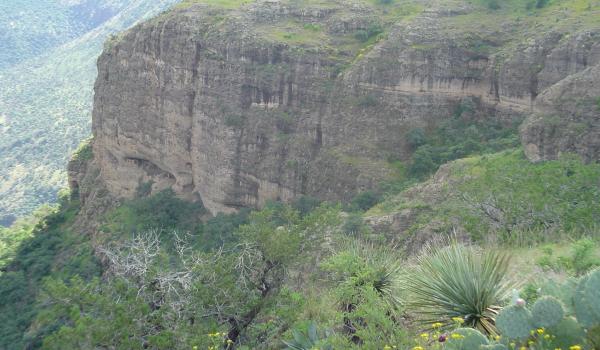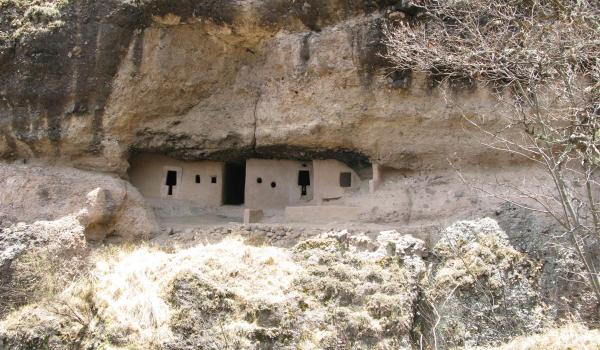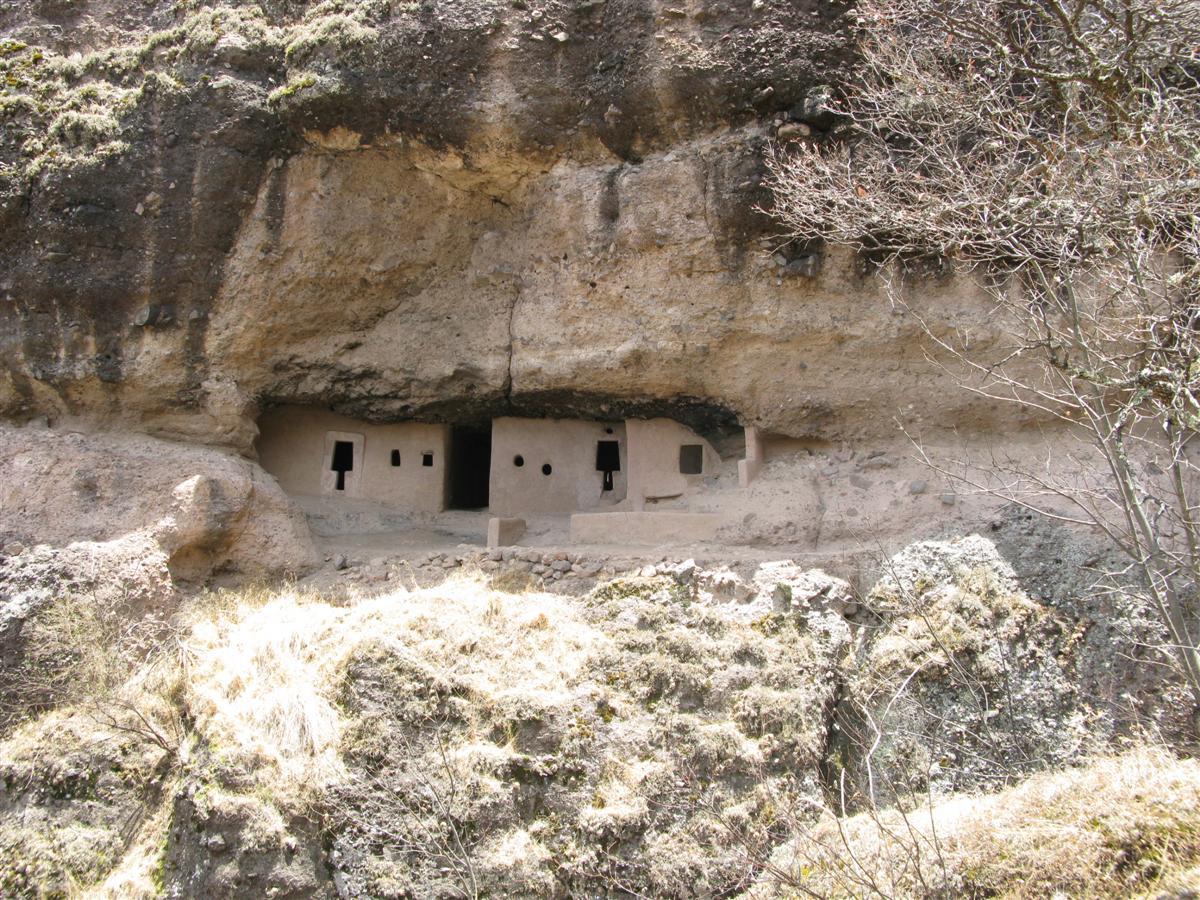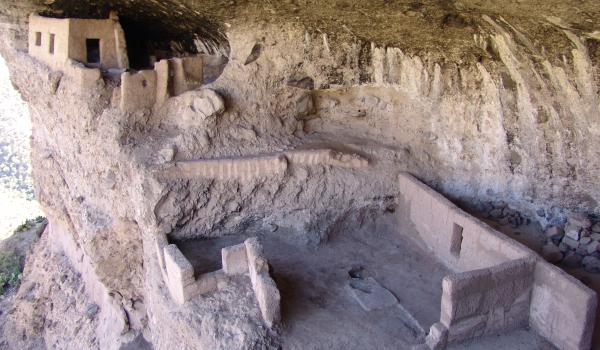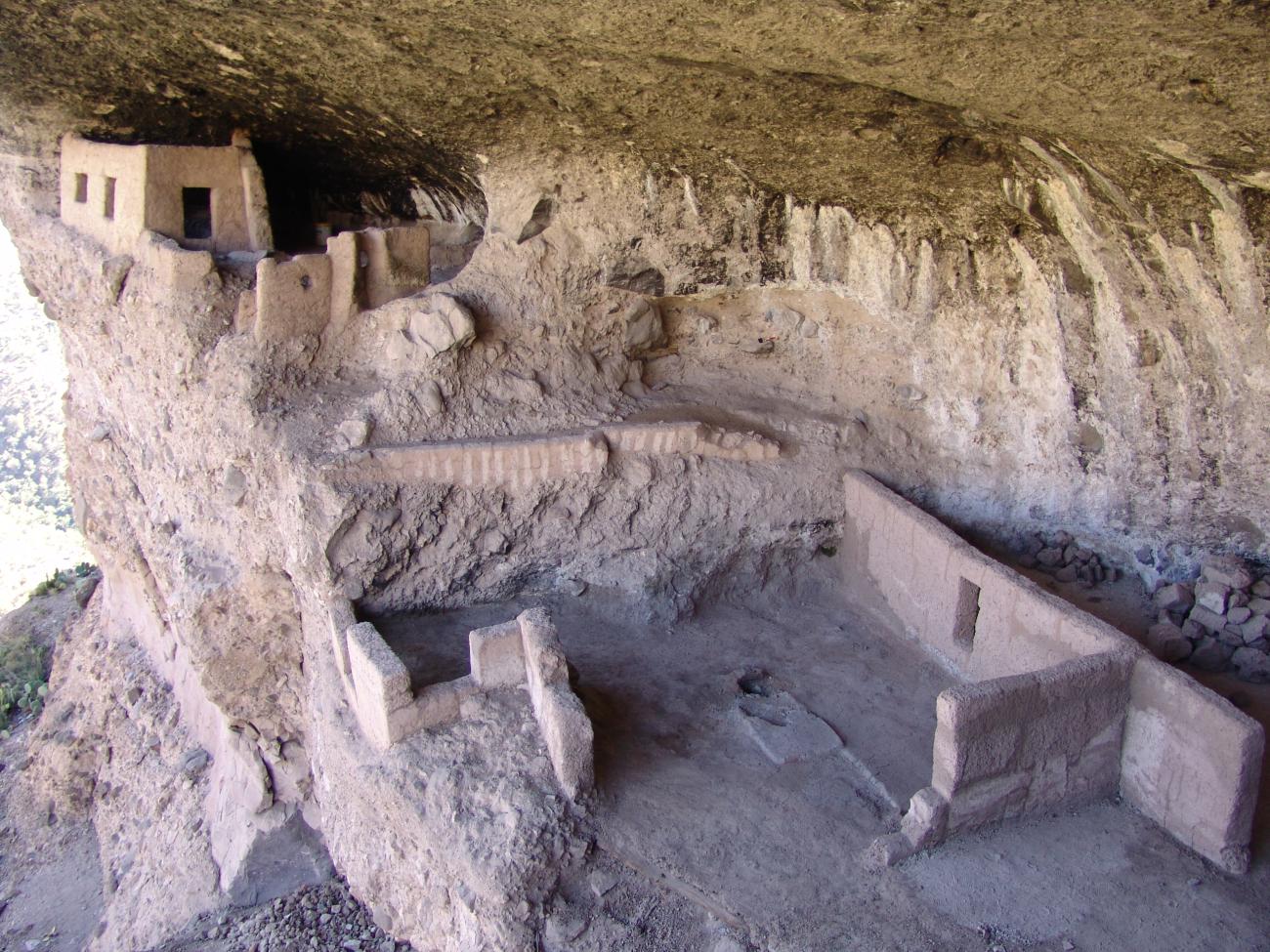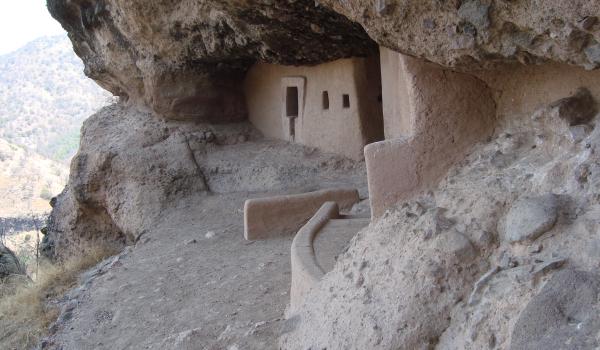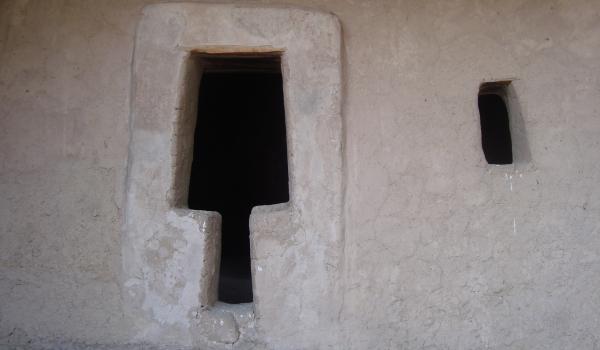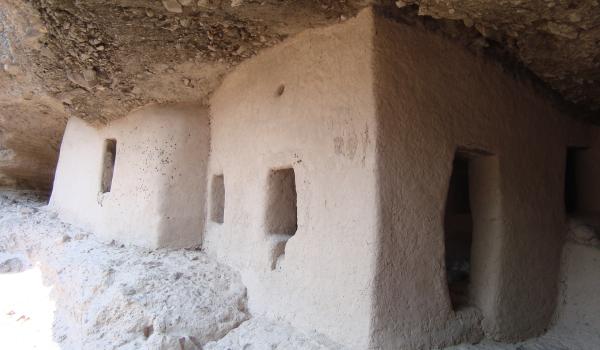The Huapoca complex is one of more than 180 cliff dwelling archeological sites recorded in the Sierra Madre Occidental. It was part of the Casas Grandes culture, of which Paquime was the regional center. Thanks to the site’s physical inaccessibility, the complexes of dwellings remain virtually free of alterations or damage.
It seems that the settlements were established as a result of migrations by groups belonging to the Mogollon culture who followed a north-south route and who gradually settled a large part of the Sierra de Chihuahua in the present-day municipality of Madera.
This site has four complexes: Cueva Nido del Águila ("Eagle’s Nest Cave"), Cueva de la Serpiente ("Cave of the Serpent"), Cueva del Mirador ("Lookout Cave") and La Atalaya ("The Watchtower"). All of these have the significant common features of houses built into the cliffs, two-story buildings, “T” shaped doors and granaries.
Like Cuarenta Casas, the Huapoca buildings were made using a formwork or molding technique with two boards placed in parallel into which a clay mixture was then poured. The clay was mixed with water and a moist cast was made inside the wooden structure. Then a person would compress them by trampling barefoot. The boards were removed once the clay had dried, leaving a wall molded to the length and height of the board. The width and height of the wall depended on the use for which the building was intended. In the case of single stories, the height reached six feet 11 inches, while additional stories could be achieved by laying down the molds again to reach a height of close to 20 feet.
For the construction of elevated floors and roofs, the people of Huapoca used thin strips or supports of pine wood placed one on top of each other until the gap was closed. Generally these roofs had a maximum length of nine and a half feet while mezzanines were built with a beam supported by the two walls of a room, or otherwise the wall was supported by the rock wall and a juniper wood column in the center of the room. The beams were given a compressed clay surface. The same procedure was used for the construction of the second story rooms and it was usual for the upper level to use the rock overhang as a roof.




